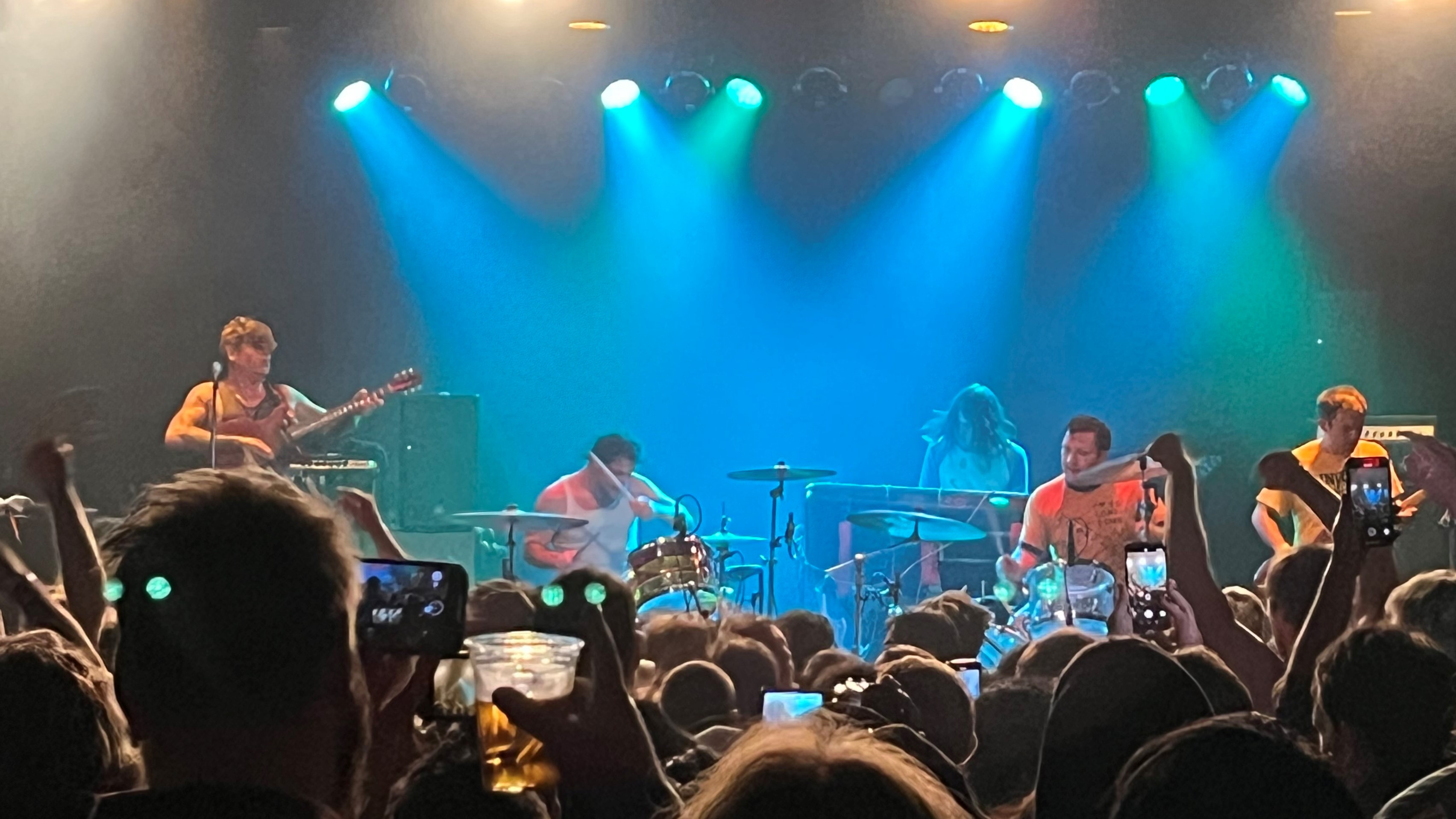I wore AirPods Pro 2 to a loud concert – and you should too
Adaptive Transparency to the rescue

A key feature of Apple’s new AirPods Pro 2, and one that helps to situate them near the top of our list of the best true wireless earbuds, is the new Adaptive Transparency mode. For the latest AirPods offering, Apple supercharged its Transparency feature to protect users’ ears from construction equipment, blaring car horns, and other sources of everyday urban noise, something it does by tapping the processing capabilities of the new, billion-transistors-strong, H2 chip.
During a briefing I had with the company following the AirPods 2 release, I learned that Adaptive Transparency was also developed with concerts and other performances in mind, and that the same feature meant to shield your ears from nearby power tools could also save them from the aural assault of live rock n roll.
This sounded like something I needed to put to the test.
I had high expectations for Adaptive Transparency ever since Apple made its surprise announcement of the AirPods Pro 2 in early September. And while the version that arrived with Apple’s latest earbuds is more basic than I had anticipated, it’s still a very welcome feature, specifically because of the way it limits loud noises when the AirPods 2 is in Transparency mode.
Sound gets measured in decibels (dB), with normal noise like background conversation registering around 60 dB. According to the US Center for Disease Control and Prevention (CDC), when nearby noise is elevated to the 80-85 dB level – about what you hear from a nearby lawn mower or leaf blower – prolonged exposure to it can cause hearing loss. Louder sounds like an approaching subway (100 dB) or a sporting event or concert (105 - 110 dB), can cause damage when you're exposed for a short period of time – as little as 5 minutes.

Going to see live bands is something I’ve been doing regularly since my teen years, and for much of that time I never concerned myself with hearing protection at shows. It was only after I started evaluating audio gear as part of my profession that it occurred to me I should be taking preventative steps to stem hearing loss, something I mainly did through the use of foam earplugs.
Sign up for breaking news, reviews, opinion, top tech deals, and more.
But the problem with foam earplugs is that they block out too much sound – you’re shielded from hearing loss-inducing decibel levels, but you also lose the high and low frequencies that fill out the sound and make it engaging when listening to music.
I eventually switched to using a set of Hearos High Fidelity earplugs, an inexpensive solution that provides 20 dB of sound attenuation without significantly altering the sound balance of music. But with their stem-like design, Hearos ‘plugs stick out of your ears and look kind of bizarre, and their protection never seemed sufficient for loud concerts at smaller venues.

AirPods Pro 2! Are you ready 2 ROCK?
Osees are an LA-based garage-rock band that has been generating inspired high-decibel sounds since the early aughts. I first caught them live back when they were known as Thee Oh Sees, and the band’s intense energy, balanced by flights into Syd Barrett-era Pink Floyd-level psychedelic abstraction, turned me into an immediate fan.
Over the years, I’ve passed on numerous opportunities to attend Osees shows, along with those of many other bands, due to my very real concern with staving off hearing loss. In the interim, Osees added a second drummer, making their sound output potentially twice as dangerous.
But following the Apple briefing where I was told that the AirPods Pro 2 design process involved numerous visits to music performances to test the effectiveness of Adaptive Transparency, I decided it was time to head back into the pit.
Arriving at the show with AirPods 2 plugged in, I wasn’t scoring any fashion points, but was willing to suffer that indignity for the sake of journalism. Once things got underway, I launched the Decibel X app on my iPhone, which told me the sound in the hall was hitting 114.7 dB peaks – diesel truck territory – with an average level of 110 dB (someone shouting directly into your ear).
With the AirPods Pro 2 removed, the sound had a raw and appealing ferocity – but it was too much. I much preferred the experience of listening with the Apple ‘buds inserted in my ears, Adaptive Transparency on, even if I was the dorkiest dude in the room.
With Adaptive Transparency active, all sound above 85 dB is fully attenuated. At the show, this created a comfortable listening level that still retained bass power and allowed for treble details like shimmering cymbals, squealing guitars, and shrill crowd whistles to come through. There was an occasional sense of volume pumping – most likely the effect of Adaptive Transparency tracking the fast and frequent changes in level and dynamics that accompany a musical performance, but it wasn’t so bad that I was going to switch it off, or completely unplug.
Quite the opposite: the next time I attend a show, I will most certainly have a set of AirPods Pro 2 hanging out of my ears. And take care not to make fun of me because, with Adaptive Transparency on, I’ll be able to hear you.

Al Griffin has been writing about and reviewing A/V tech since the days LaserDiscs roamed the earth, and was previously the editor of Sound & Vision magazine.
When not reviewing the latest and greatest gear or watching movies at home, he can usually be found out and about on a bike.